Lecture 01: What Is Ecology
1/40
There's no tags or description
Looks like no tags are added yet.
Name | Mastery | Learn | Test | Matching | Spaced |
|---|
No study sessions yet.
41 Terms
Early ecologists
Throughout their history, people have tried to understand how nature works.
Knowledge passed on over generations (traditional ecological knowledge) and/or acquired by knowledgeable locals (local ecological knowledge) remain important sources of ecological understanding to this day.
In the western literature, ecological writings (describing relationships between animals and plants) can be traced back as far back as Aristotle and his students (4th century BC).
Leaps in knowledge occurred during the 17th-19th century when naturalists greatly advanced their fields.
Carl Linnaeus, 1707- 1778 (taxonomy)
Alexander von Humboldt, 1769-1859 (biogeography)
Charles Darwin, 1809- 1882 (evolution)
The term “ecology” was coined
in 1866 by Ernst Haeckel, from oikos (Greek: “household”, “home”, “place to live”) and logos (Greek: “study of”):
“By Ökologie we mean the comprehensive science of the relationships of the organism to its surrounding environment, in which we include, in the broader sense, all "conditions of existence.“
Ecology
is the scientific study of the interactions of organisms with their environment and one another that determine their distributions and abundances.
Ex. “Why are there lots of mosquitos everytime I go their” → thats ecology (species interacting with species determining their distribution)
An Example of Ecological Interactions (with implications for conservation biology and human food security):
A Marine Trophic Cascade
A Marine Trophic Cascade
After nearly a century of recovering from overhunting, sea otter populations were suddenly in decline over large areas of their range during the late 20th century.
Simultaneously, increased predation by orcas was observed, and kelp forests were lost and being replaced by urchin barrens. Why?
Sea otters eat urchins. Less sea otters = more sea urchins because their not getting eaten
Sea urchins eat kelp. Lots of sea urchins = less kelp because sea urchins are eating them
Orcas will ignore the sea otters and prefer sea lion instead → what caused the orcas to not go after the sea lions and instead target of sea otters
Human’s fishing was the problem
Humans don’t fish → lots of fish, sea lion and seal populations are large → orcas go after their desired prey the sea lions → leave otters alone
Humans overfish → sea lion and seal populations decline, leading indirectly to an increased predation by orcas on sea otters
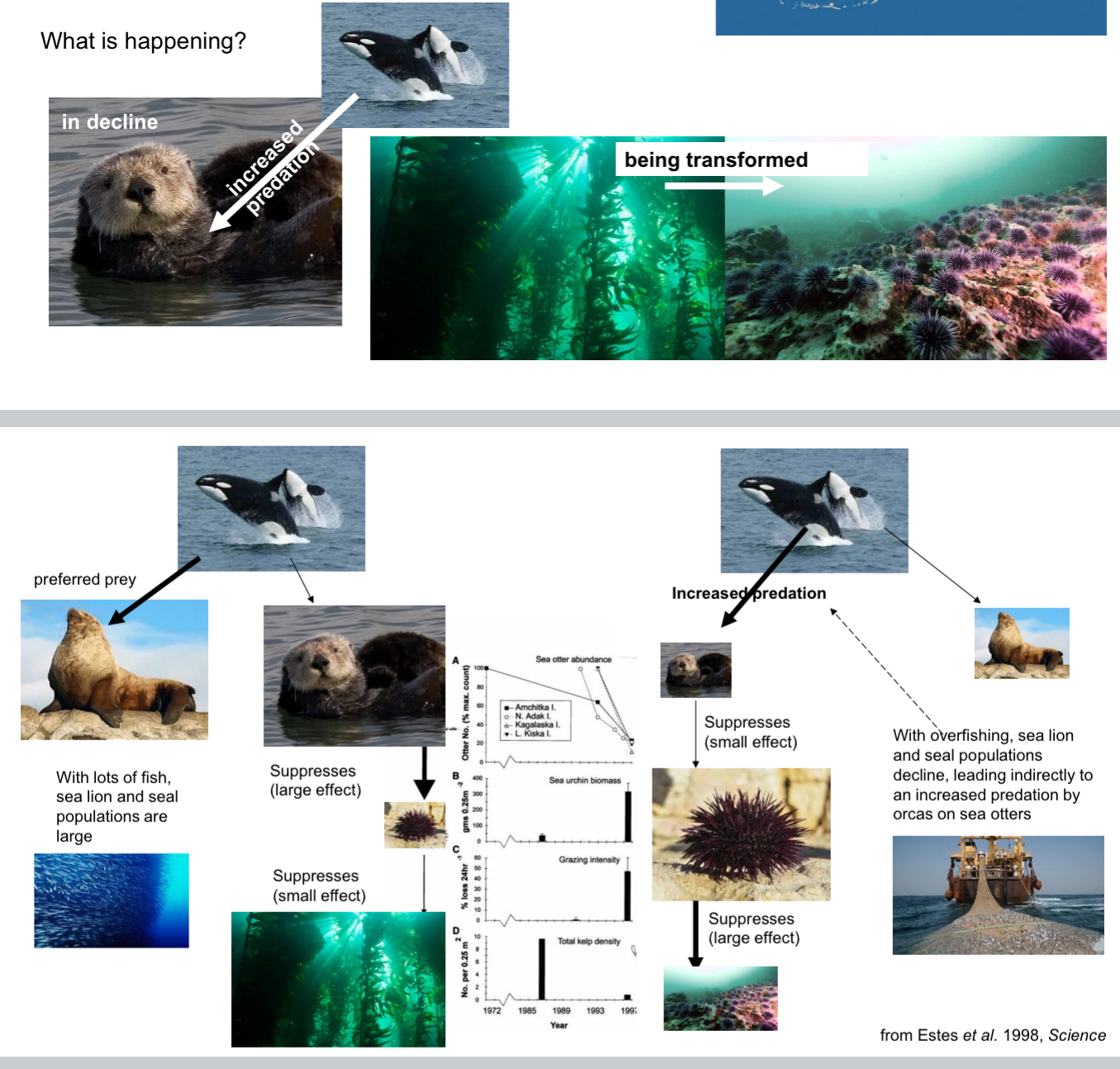
An Example of Ecological Interactions (with implications for human health):
Land Use Change Impacts on Schistosomiasis Epidemics
Land Use Change Impacts on Schistosomiasis Epidemics
Humans install dams
Dams create wetlands
Species like wetlands like snails that host Schistosomes (parasitic worm that causes Schistosomiasis)
Schistosomiasis
aka snail fever, bilharzia
caused by parasitic flatworms called schistosomes.
urinary and/or intestinal infections (abdominal pain, diarrhea, bloody stool, blood in urine).
Chronic infections can lead to liver damage, kidney failure, infertility, or bladder cancer
>250M people affected
Life cycle of a schistosomes
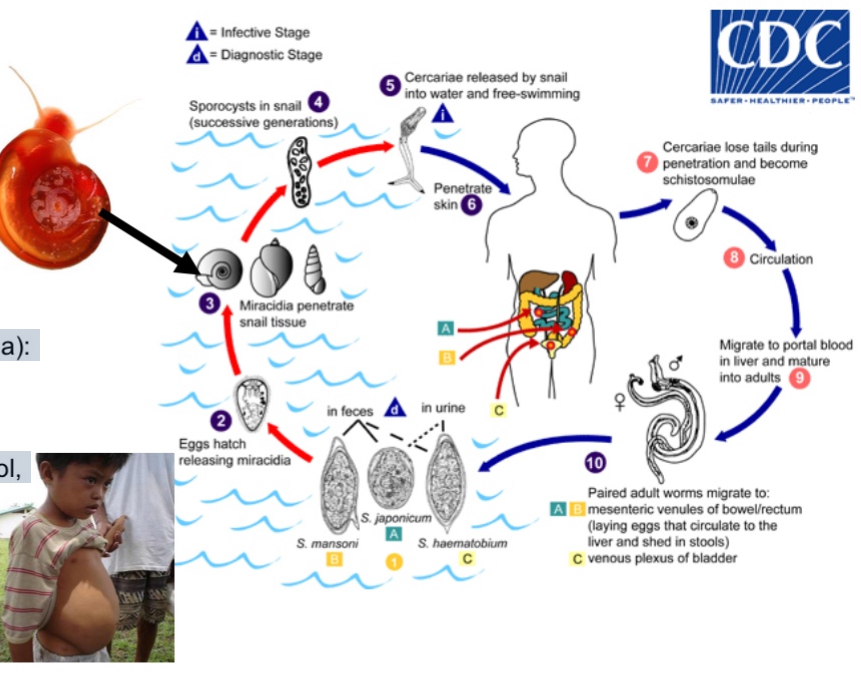
Everything in Nature is Interconnected
In general, organisms within ecosystems are connected in myriads of ways (e.g., through their resource needs), leading to complex interaction webs (cf. Lecture 9 for details).
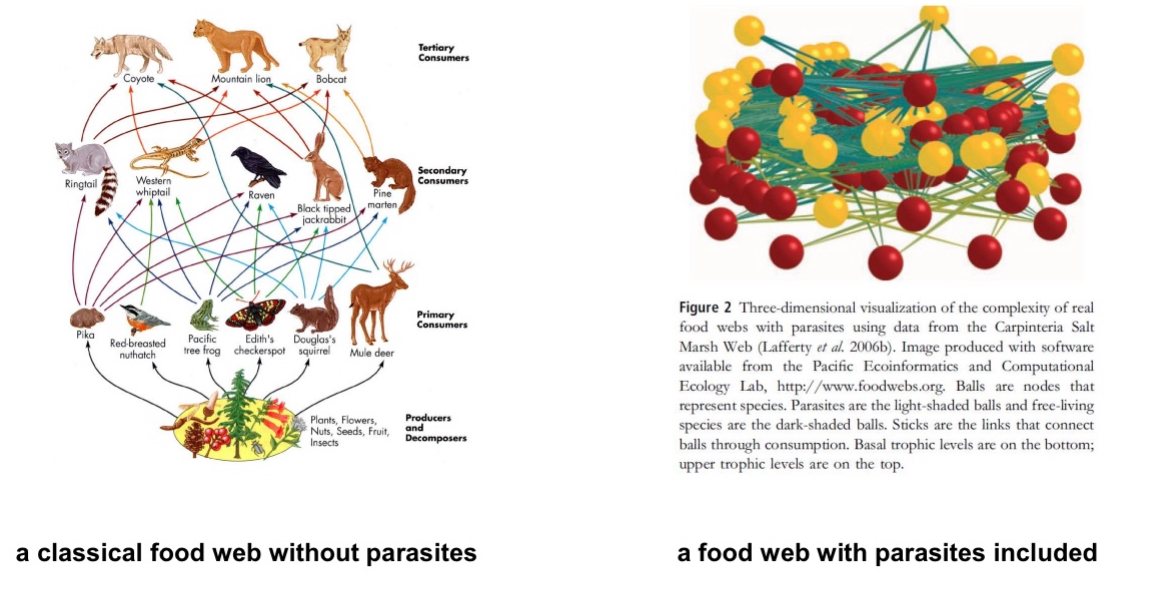
The “Great Acceleration”
In the Anthropocene, human impact has grown to the point that it has changed the course of Earth’s history for millennia. Human actions dominate the planet and have led to a biological world that is rapidly shifting towards an unknown future state.
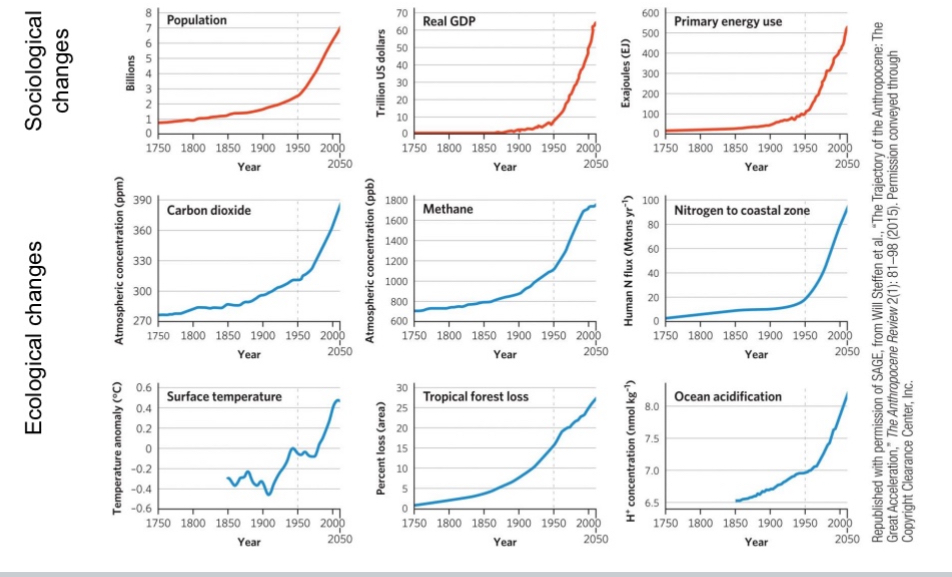
Anthropogenic Impacts on Ecosystems
Ecologists are facing numerous new challenges in the Anthropocene, including understanding the impacts of, and devising mitigation strategies for (cf. Lecture 12 for details
Land use change, climate change, over exploitation, invasive species and homogenization, species extinctions
“But I’m not an Ecologist”
The world is changing and these changes will influence both your personal (e.g., impacts of ecosystem service losses on your well-being) and professional life (e.g., how your company interfaces with ecological sustainability). Understanding ecological connections will help you better understand and navigate these challenges.
The concepts and tools you learn in this course are used in many related fields in an analogous manners: demography, medicine, epidemiology

Levels of Biological Organization
Atom → molecule or compound → organelle → cell → tissue → organ → organ system → organism
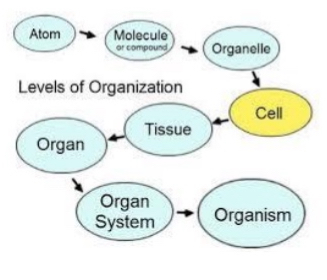
Population
group of individuals of same species, living and interacting with one another in a particular area
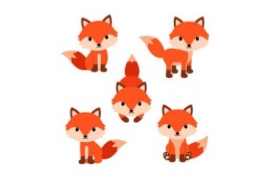
Community
an association of interacting populations of different species, living and interacting in the same area
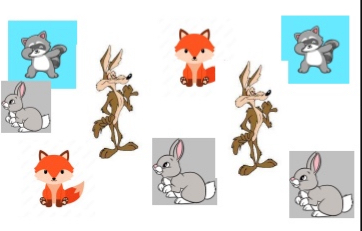
Ecosystem
a community of organisms plus their abiotic (physical) environment

Biosphere
all the world’s ecosystems
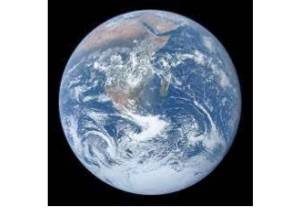
HOW DO WE LEARN ABOUT ECOLOGY?
Observation & Natural History
Experimental Ecology & Null Hypothesis Testing
Multiple Hypothesis Testing with Best-Fit Comparisons
Ecological Modelling
Observation & Natural History
Natural history is the study of animals, plants, and fungi, particularly focusing on observation and description (rather than experiment or scientific analysis).
Observations and descriptions as opposed to testing scientific hypotheses ex. Darwin
Natural history is the historical foundation of the field of ecology but differs from modern approaches, where observations are typically combined with other approaches of scientific analysis.
In modern times, observation remains critical to the study of ecology but has shifted away from describing species to describing broad ecological patterns combined with other approaches of scientific analysis.
Example: National Ecological Observatory Network (NEON), collecting >175 types of open- access data from 81 locations across 20 different ecological domains following standardized protocols
Problem of Observation & Natural History
Only describes the ‘what’ not the ‘why’
Experimental Ecology & Null Hypothesis Testing
From the second half of the 20th century onwards, ecologists increasingly began to apply manipulative experiments and statistical hypothesis testing (i.e., researchers develop hypotheses about the mechanisms that lead to observed ecological patterns, and then conduct carefully designed experiments to produce evidence for supporting or rejecting the hypothesis).
Experimental Ecology & Null Hypothesis Testing Gives us the
Why
Scientific method for 10 yr olds
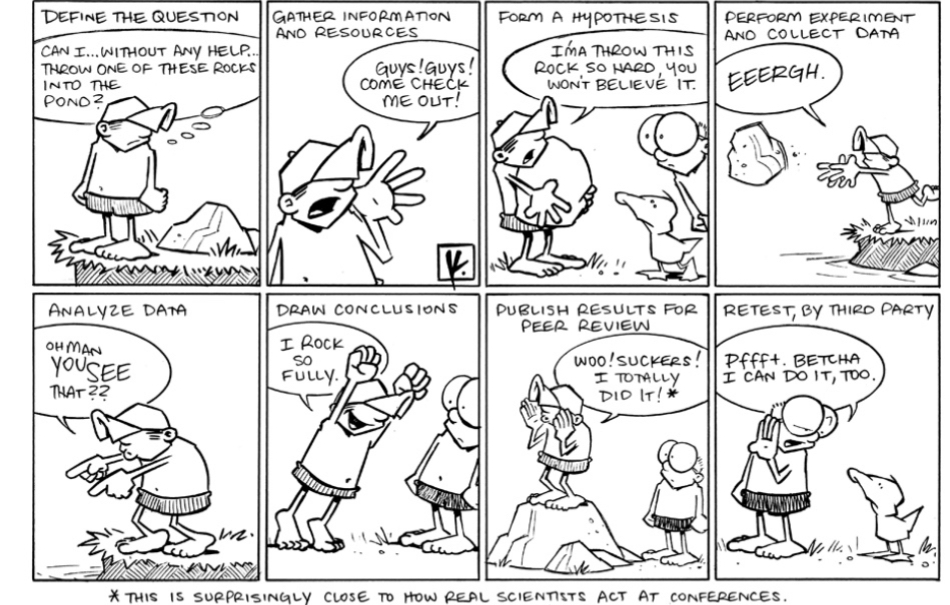
Scientific method
Based on observation (either direct or through knowledge from previous work / the literature), propose a question.
Based on your question, propose a null hypothesis (focal factor does not have an effect) and an alternative hypothesis (focal factor has an effect).
Design an experiment that alters/manipulates one or more focal factors (including controls with no manipulation for comparison) and can falsify the null hypothesis (i.e., show that the focal factor(s) do have an effect).
Analyze the data to arrive at results, and then an interpretation for the observations
Interpretation leads to new questions and the process restarts.
The process is iterative and self-correcting.
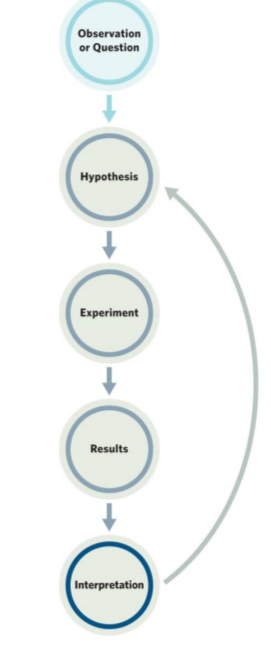
null hypothesis
focal factor does not have an effect
alternative hypothesis
focal factor has an effect
Approaches to Ecology: Experimental Ecology & Null Hypothesis Testing Example: Lynx-Snowshoe Hare Cycles observations
When hare populations increased, lynx numbers soon rose as well. Then, as lynx numbers peaked and more hares were eaten, hare populations declined — followed by a decline in lynx numbers due to lack of prey.
This created a regular boom-and-bust cycle that fascinated ecologists and became a model for studying population dynamics.
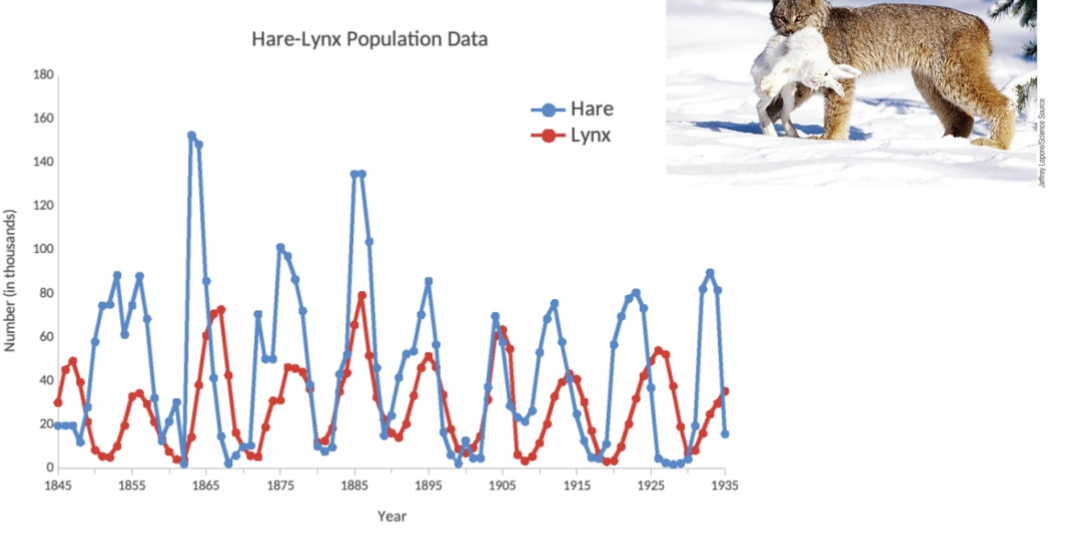
Ecological theory suggests that “+/- relationships” between consumers and their resource
may lead to population cycles in both the consumer and the resource.
= if you have lots of prey, that will have a positive affect on the abundance of predators
= more predators means less prey because they will be eaten = negative relationship
+/- interaction lead to population cycles
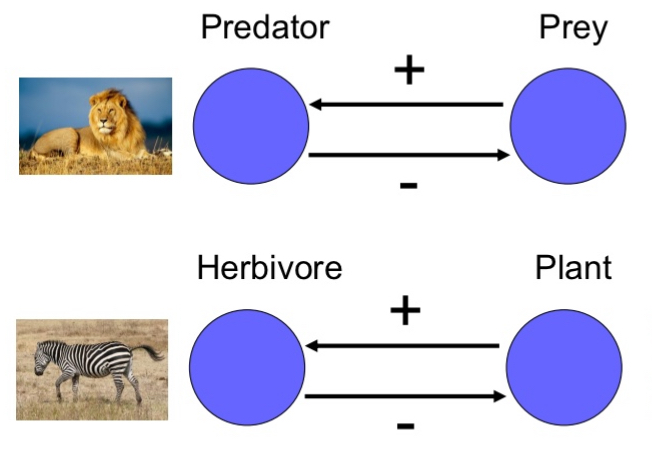
Approaches to Ecology: Experimental Ecology & Null Hypothesis Testing Example: Lynx-Snowshoe Hare Cycles Hypothesis
The reported lynx-hare cycles are driven by predator-prey interactions.
When lynx populations rise, they eat more hares, reducing hare numbers, which later causes lynx to decline.
The reported lynx-hare cycles are driven by interactions between hare and their food resource
When hares overconsume their food (shrubs and vegetation), food shortages lead to hare population crashes, which then cause lynx numbers to fall.
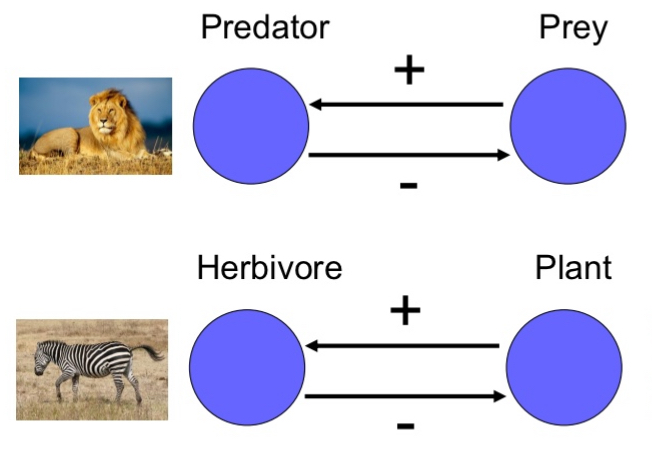
Approaches to Ecology: Experimental Ecology & Null Hypothesis Testing Example: Lynx-Snowshoe Hare Cycles Experiments
Charlie Krebs & colleagues designed a large-scale field experiment to test whether hare cycles are a consequence of predation or due to competition for limited food supplies.
They set up 1km x 1km blocks of forest in Yukon, YT, where they monitored hare densities & survival rates for eight years
Added food hypothesizing that if its the shortage of hares that causes lynx to cycle, then giving them additional food, then cycle should disappear
Remove predators: cycle should stop if predators is the reason
Or both
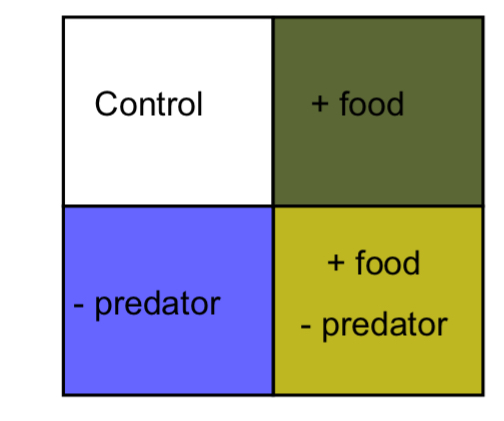
Approaches to Ecology: Experimental Ecology & Null Hypothesis Testing Example: Lynx-Snowshoe Hare Cycles Results
“Predator exclosure doubled and food addition tripled hare density during the cyclic peak and decline. Predator exclosure combined with food addition increased density 11-fold. […] Food and predation together had a more than additive effect,…
Approaches to Ecology: Experimental Ecology & Null Hypothesis Testing Example: Lynx-Snowshoe Hare Cycles interpretation
… which suggests that a three-trophic-level interaction generates hare cycles.
results showed that both food availability and predation pressure are key in controlling hare populations.
The combined, more-than-additive effect indicates a three-trophic-level interaction:
Plants → Hares → Lynx
Therefore, hare cycles are driven by interacting effects of predators and food resources, not by one factor alone.
Multiple Hypothesis Testing with Best-Fit Comparisons (when to use)
In many situations, experiments cannot be repeated (e.g., due to ecosystem idiosyncrasies over time and space), or conducted logistically (e.g., experimental approaches are typically biased towards small species and short timescales), or ethically (e.g., experimentally testing the effects of an increasingly stressful climate on an endangered species).
However, large amounts of various types of data are often available or can be can collected by observation only, without manipulation. Similar to real-life sleuths, ecological detectives can use these data to assess the strength of evidence for a suite of hypotheses regarding which ecological processes might operate.
Multiple Hypothesis Testing with Best-Fit Comparisons
provides a considerable philosophical departure from the classical hypothesis testing framework outlined in the previous section
Instead of aiming to falsify a hypothesis that suggests that a particular factor has no effect, the approach aims to evaluate multiple competing hypotheses for their relative support by the data.
If A is true you would expect the response variable to rise as the explanatory variable rises
If hypothesis B is true you expect the opposite
If hypothesis C is true, you expect the hump shape curve, first is rises then goes back down again
Then go and collect data, does the data suggest increase, decrease or a hump
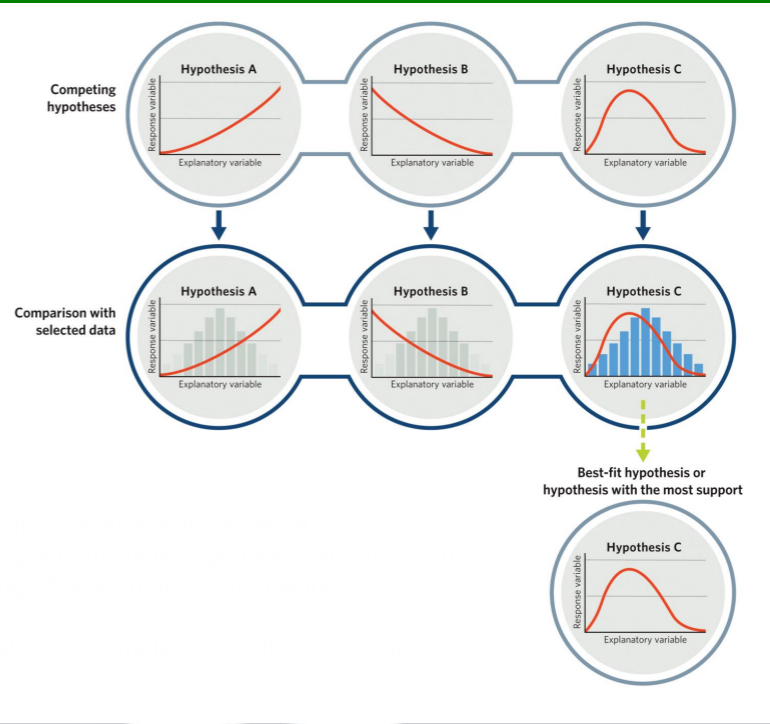
Advantages to Multiple Hypothesis Testing with Best-Fit Comparisons
Didn’t need to do any replication
can make use of large amounts of available information
allows simultaneously working with multiple hypothesis, and thus, our comprehensive understanding of how an ecosystem works
acknowledges uncertainty
can easily accommodate real-world complexities without requiring large-scale experiments
Approaches to Ecology: Multiple Hypothesis Testing with Best-Fit Comparisons Example: Sea Lice Epidemics on Salmon
In the early 2000s, infestations of young juvenile salmon with a parasitic copepod, commonly known as “sea louse”, began being reported from the Broughton Archipelago, BC.
Suspicions began to emerge that the sea lice may be originating from one or more fish farms along the salmon migration route.
Sampling within the farm is not possible. Experimentally removing the farm is also not possible. So, how can we evaluate the evidence for this hypothesis?
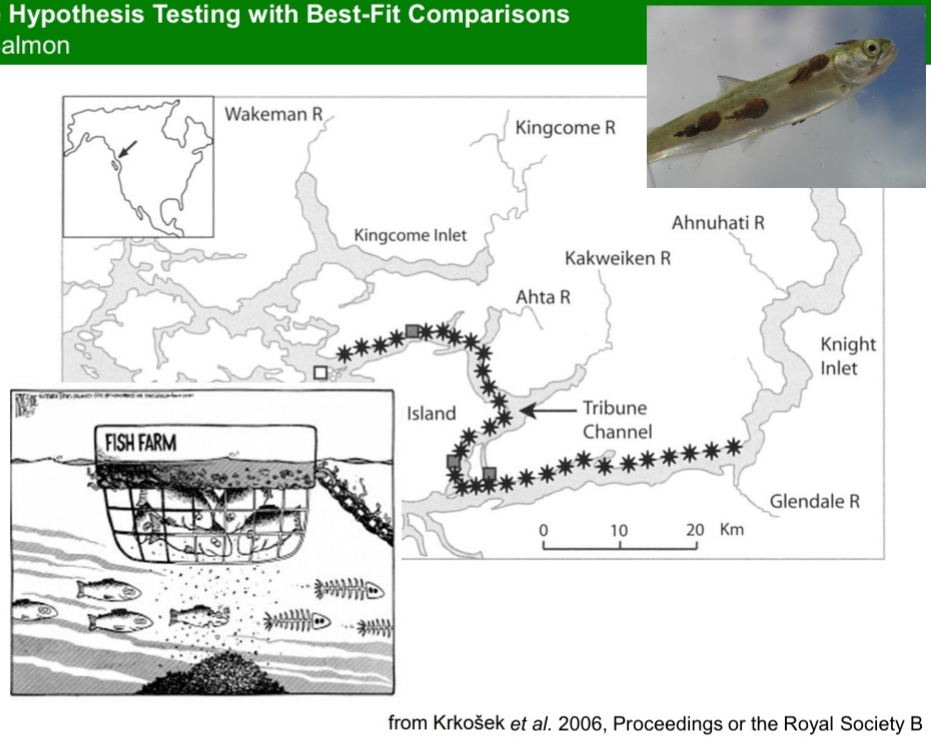
Sea Lice Epidemics on Salmon Hypothesis
Hypothesis 1: if sea lice occur naturally, expect abundance of the lice has nothing to do with where the farm is
Hypothesis 2: if lice was coming from the farm, expect fishes to hatch without fish lice, come through the farm, and pick them up
Secondary infections from reproducing lice that are already on salmon
Hypothesis 3: occur naturally throughout the fjord, with additional contributions from the fish farm
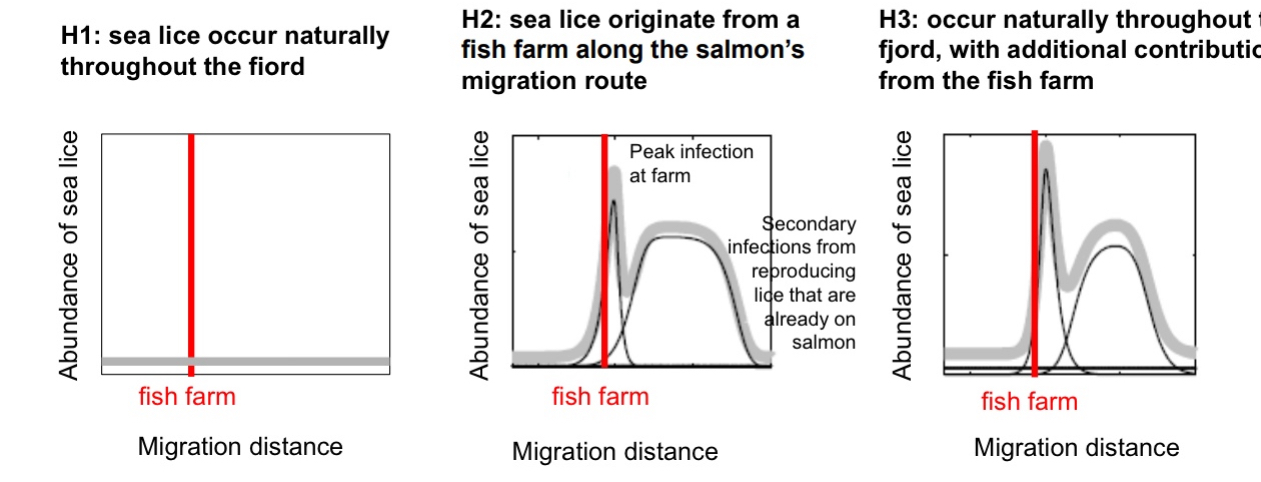
Sea Lice Epidemics on Salmon results
Hypothesis 3 is correct
The data suggest that sea lice occur naturally throughout the fjord and that there is a particularly strong infection hotspot at the location of the fish farm.
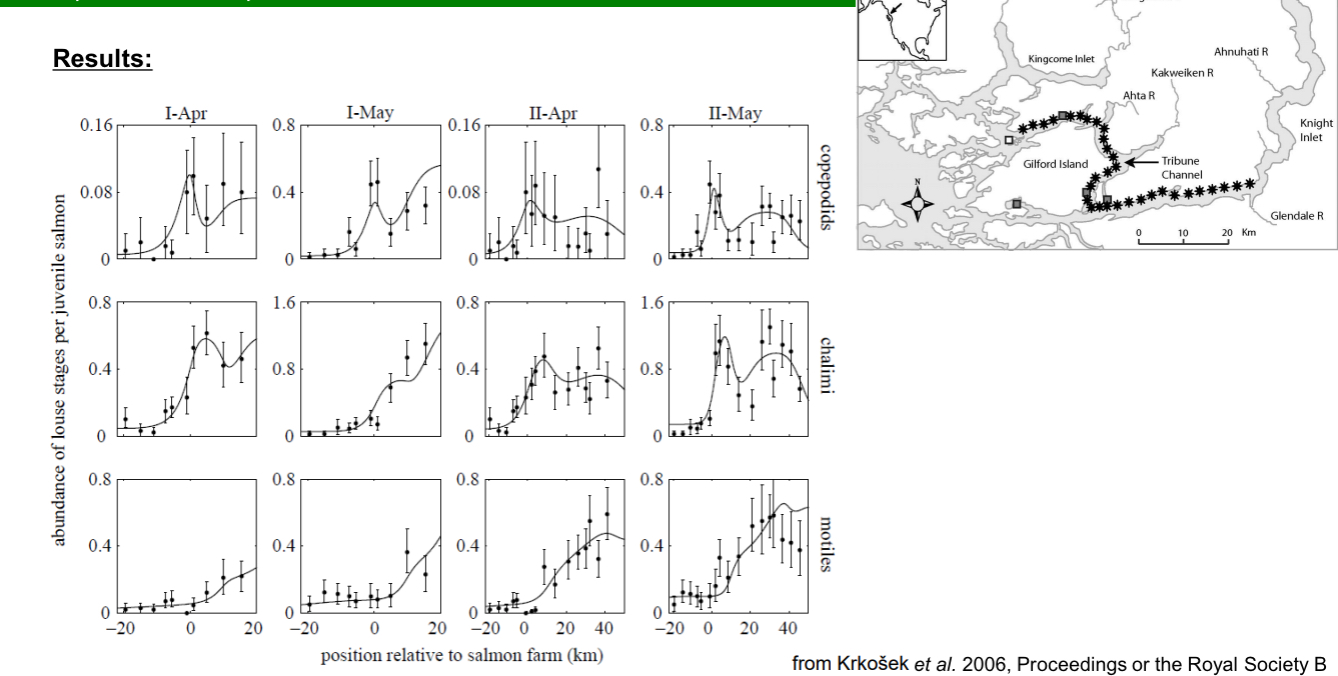
A Marine Trophic Cascade Summary
orcas overate sea otters because humans overhunted their other food sources (sea lions and seals)
Otters eat sea urchins. Less otters (because orcas are eating too many of them) = more sea urchins
Too many sea urchins = too much kelp being eaten → loss of biodiversity
Shows how human actions have consequences
Land Use Change and Schistosomiasis Epidemics summary
Humans built dams to control water flow and support agriculture.
These dams created slow-moving or stagnant wetlands — ideal habitats for freshwater snails.
Why it matters:
Some snail species are hosts for schistosomes, parasitic worms that cause schistosomiasis (also called snail fever or bilharzia).
When people come into contact with contaminated water, the parasite can penetrate the skin and cause infection.
human land-use change (building dams) altered the ecosystem, allowing disease-carrying snails to thrive